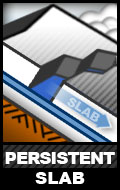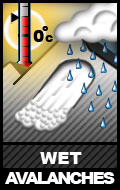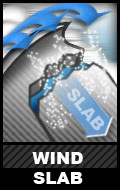Weekend Avalanche Outlook
This is a regional backcountry avalanche forecast for the Western Chugach Mountains of Chugach State Park. It is provided pro bono by a local avalanche professional, is based on limited field data for a large area, and is meant to be used only as a general baseline for recreationists’ personal and specific assessment in the field. The Anchorage Avalanche Center and associates assume no responsibility or liability for the use of this information. Anyone using this information needs to be formally educated in regard to avalanches and backcountry travel. Please encourage statewide investment in high quality outdoor and environmental education via K-12 public schools, as this is the best way to ensure all Alaskans are “avy savvy.”
Click the hyperlinks and icons for further learning.
Get outside and enjoy The Greatland! This is your weekend avalanche outlook for March 20-22, 2020.
The avalanche danger this weekend is expected to be moderate. Be sure to practice safe travel protocols and effective terrain management to minimize exposure to potentially dangerous avalanche terrain and reduce the consequences if an avalanche is triggered.
The Western Chugach Mountains of Chugach State Park generally received 1-3″ of snow Tuesday night and another 1-3″ of snow Thursday night. This snow had relatively high water content and was dense. It came with generally moderate winds, and significant wind loading did not occur due to the lack of strong winds and the relatively wet snow.
A springtime routine of diurnally increasing avalanche danger has begun. Avalanche danger will increase throughout each day, especially on solar aspects, due to warming temperatures and solar radiation.
This spring we have particularly tricky and dangerous avalanche conditions, especially in areas of Chugach State Park north of the Front Range (e.g. South Fork Eagle River area). This is due to a relatively high volume snowpack, combined with heavily faceted snow from the very cold and dry month of January, and in some areas a rain/melt-freeze crust from late December-early January that underlies the heavily faceted January snow.
The heavily faceted January snow is proving to be a VERY PERSISTENT WEAK LAYER. The rain/melt-freeze crust that underlies it up to at least 3500′ in the South Fork area has enhanced faceting and is providing a very low friction bed surface causing avalanches to run much further than they would without this very slick bed surface.
Considering that temperatures remained cold for much of the winter and we haven’t yet had springtime melt-freeze cycles, the January facets remain reactive and will be slow to bond and stabilize.
As spring begins in earnest, with warming temperatures and increasingly intense solar radiation, large and destructive avalanches are expected to occur due to a loss in snowpack strength causing failures on the mid-snowpack January facet layer and basal facets and depth hoar near the ground.
Remember that terrain traps can make even a small avalanche deadly. Be mindful of the consequences if you were to fall or lose control due to triggering just a small avalanche. Beware of exposure where a fall or slip could cause trauma, as well as channeled terrain features that might cause even a small amount of debris to pile up deeply.
Problem 1 – Persistent Slab
Human triggered persistent slab avalanches up to D3 (large, deadly, and destructive) in size are possible above 2500′ on terrain steeper than 35º across all aspects.
In general, the persistent slab danger is higher in northern areas of Chugach State Park (i.e. from Arctic Valley north to the Knik River).
While persistent slabs will eventually become more stable on solar aspects with spring melt-freeze cycles, they will initially become less stable. Expect the persistent slab danger to increase significantly throughout the day on solar aspects Sunday and Monday due to warming temperatures and solar radiation.
A human triggered persistent slab may be very difficult to escape, as a person may be able to get into the middle of the slab before it releases from above with hard slab characteristics. The hard slab nature of the debris also makes trauma more likely. The relatively hard wind-packed layers may be able to bridge the weight of a human trigger, but if a weak spot is found (likely where the wind-packed, hard slab layer is thinner and/or less supportable) a dangerous avalanche could result.
In areas like South Fork Eagle River (watch the above video for detailed and in-depth information on the snowpack there) collapsing (“whumphing”) is still occurring despite no significantly stressful weather in the past couple weeks. Considering there is generally a thick hard slab overlying very loose and weak faceted snow, be mindful of your proximity to steep slopes (even if you aren’t on a steep slope itself) as a dangerous avalanche could be triggered from below.
Snowpits and stability tests this week continued to evidence propagation propensity on the January facets (Q1/Sudden Collapse ECTP moderate to hard failures).
There is no effective way to manage the perplexing persistent slab avalanche problem other than simply avoiding terrain capable of producing a large persistent slab. The most likely terrain to produce such an avalanche is a steep and open slope especially if it’s convex, unsupported, and/or has thinner areas where the persistent weak layer is closer to the surface and more likely to be impacted by a human trigger.
Assessment this problem in the specific area in which you’re traveling will require thorough snowpack investigation: digging a snowpit, analyzing the stratigraphy, and conducting stability tests like the ECT. As always, be mindful of red flags (especially recent avalanches, collapsing or “whumphing,” shooting cracks, active loading, etc.) and be very diligent about safe travel protocols.
Problem 2 – Wet Avalanches
Wet avalanche danger is expected to increase significantly throughout the day Sunday and Monday on steep solar aspects (primarily east clockwise to west aspects) considering the forecast sunshine.
Natural and human-triggered loose wet avalanches are likely, especially initiating from steep and rocky terrain. Warming rocks will readily shed snow onto the slopes below them. These loose wet avalanches have the potential to trigger more dangerous persistent slabs as they descend.
Warmth and solar radiation may also de-stabilize persistent slabs, as discussed above.
It’s now the time of year when route planning needs to take aspect relative to the sun into consideration. Make sure your route does not expose you to terrain that has been de-stabilized by warm temperatures and the sun later in the day. This includes being mindful of overhead hazard, even if you’re on relatively flat terrain.
South and west-facing avalanche terrain and paths in the Turnagain Arm area are prime examples of overhead hazards and terrain traps. Potentially dangerous, sun-exposed avalanche terrain and paths exist in the vicinity of popular hiking trails and nordic ski routes: Penguin Ridge, Bird Ridge, Indian Creek (i.e. Arctic to Indian), and Falls Creek. Make sure you know how to identify and avoid potentially dangerous, sun-affected avalanche terrain!
Problem 3 – Wind Slab
Small (D1) human triggered wind slabs are possible on steep (35º+) leeward terrain that gets wind-loaded with fresh snow Saturday.
Wind-loaded snow may look pillowy and/or bulbous. Dangerously wind-loaded snow may feel hollow and punchy, indicating a denser slab overlying looser and weaker snow.
Pole probing and quick hand pits are a way to assess wind slab danger near the surface. Expert skiers and backcountry travelers may be able to use prudent ski cuts to assess and manage the wind slab problem.
Problem 4 – Cornice Fall
Cornices (especially over typically leeward slopes: primarily west clockwise through north aspects above 2500′) are large in many areas of Chugach State Park. Cornices may become more prone to failure and falling on solar aspects Sunday and Monday considering relatively warm temperatures and intense solar radiation. Beware of overhead cornice fall hazard, as well as naturally triggered avalanches that may result from cornice falls.
Give corniced ridges a wide berth; cornices may break off further back than expected. Do not approach the edge of a snow-covered ridge, unless you’re sure it’s not corniced. A cornice fall itself is dangerous, especially if the human trigger falls onto exposed terrain. Cornice falls may also trigger slab avalanches as they “bomb” the slope they fall onto.
Danger Trend
Avalanche danger will increase Saturday due to the forecast few inches of mountain snowfall and moderate wind. Low visibility in the alpine Saturday will further complicate mountain travel. Sunday and Monday, the danger will increase throughout the day on solar aspects (primarily east clockwise to west aspects) due to warming temperatures and solar radiation.
Mountain Weather
A few inches of mountain snowfall and moderate wind is forecast for Saturday. Sunday and Monday are forecast to be sunny with winds becoming light. Expect daytime alpine temperatures in the 20s through Monday.
Best wishes for your weekend!
Please let us know what you’re seeing by tagging us on Instagram @anchorage_avalanche_center, submitting an observation, sending an email to info@anchorageavalanchecenter.org, or via FaceBook message. All observations help us provide the public with a better forecast product – no matter how basic. We are more than willing to keep observations confidential, and only use the information to inform forecast products.
Funding and resources for this forecast generously provided by the Post-Capitalists and Libertarian Socialists of Alaska who encourage you to #FeelTheBern, #DumpTrump, #RecallDunleavy, and tell Murkowski, Young, and Sullivan that this is their last term! Our democracy and planet are at stake, stand up and fight the power!




